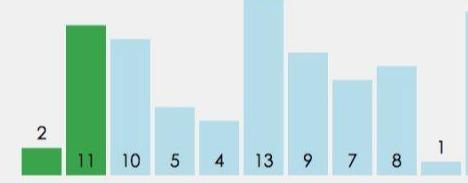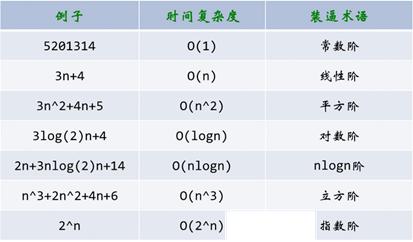浅析Python实现DFA算法
浅析Python实现DFA算法
一、概述
计算机操作系统中的进程状态与切换可以作为 DFA 算法的一种近似理解。如下图所示,其中椭圆表示状态,状态之间的连线表示事件,进程的状态以及事件都是可确定的,且都可以穷举。
DFA 算法具有多种应用,在此先介绍在匹配关键词领域的应用。
二、匹配关键词
我们可以将每个文本片段作为状态,例如“匹配关键词”可拆分为“匹”、“匹配”、“匹配关”、“匹配关键”和“匹配关键词”五个文本片段。
【过程】:
- 初始状态为空,当触发事件“匹”时转换到状态“匹”;
- 触发事件“配”,转换到状态“匹配”;
- 依次类推,直到转换为最后一个状态“匹配关键词”。
再让我们考虑多个关键词的情况,例如“匹配算法”、“匹配关键词”以及“信息抽取”。
可以看到上图的状态图类似树形结构,也正是因为这个结构,使得 DFA 算法在关键词匹配方面要快于关键词迭代方法(for 循环)。经常刷 LeetCode 的读者应该清楚树形结构的时间复杂度要小于 for 循环的时间复杂度。
for 循环:
keyword_list = []
for keyword in ["匹配算法", "匹配关键词", "信息抽取"]:
if keyword in "DFA 算法匹配关键词":
keyword_list.append(keyword)
for 循环需要遍历一遍关键词表,随着关键词表的扩充,所需的时间也会越来越长。
DFA 算法:找到“匹”时,只会按照事件走向特定的序列,例如“匹配关键词”,而不会走向“匹配算法”,因此遍历的次数要小于 for 循环。具体的实现放在下文中。
【问】:那么如何构建状态图所示的结构呢?
【答】:在 Python 中我们可以使用 dict 数据结构。
state_event_dict = {
"匹": {
"配": {
"算": {
"法": {
"is_end": True
},
"is_end": False
},
"关": {
"键": {
"词": {
"is_end": True
},
"is_end": False
},
"is_end": False
},
"is_end": False
},
"is_end": False
},
"信": {
"息": {
"抽": {
"取": {
"is_end": True
},
"is_end": False
},
"is_end": False
},
"is_end": False
}
}
用嵌套字典来作为树形结构,key 作为事件,通过 is_end 字段来判断状态是否为最后一个状态,如果是最后一个状态,则停止状态转换,获取匹配的关键词。
【问】:如果关键词存在包含关系,例如“匹配关键词”和“匹配”,那么该如何处理呢?
【答】:我们仍然可以用 is_end 字段来表示关键词的结尾,同时添加一个新的字段,例如 is_continue 来表明仍可继续进行匹配。除此之外,也可以通过寻找除 is_end 字段外是否还有其他的字段来判断是否继续进行匹配。例如下面代码中的“配”,除了 is_end 字段外还有“关”,因此还需要继续进行匹配。
state_event_dict = {
"匹": {
"配": {
"关": {
"键": {
"词": {
"is_end": True
},
"is_end": False
},
"is_end": False
},
"is_end": True
},
"is_end": False
}
}
接下来,我们来实现这个算法。
三、算法实现
使用 Python 3.6 版本实现,当然 Python 3.X 都能运行。
3.1、构建存储结构
def _generate_state_event_dict(keyword_list: list) -> dict:
state_event_dict = {}
# 遍历每一个关键词
for keyword in keyword_list:
current_dict = state_event_dict
length = len(keyword)
for index, char in enumerate(keyword):
if char not in current_dict:
next_dict = {"is_end": False}
current_dict[char] = next_dict
current_dict = next_dict
else:
next_dict = current_dict[char]
current_dict = next_dict
if index == length - 1:
current_dict["is_end"] = True
return state_event_dict
关于上述代码仍然有不少可迭代优化的地方,例如先对关键词列表按照字典序进行排序,这样可以让具有相同前缀的关键词集中在一块,从而在构建存储结构时能够减少遍历的次数。
3.2、匹配关键词
def match(state_event_dict: dict, content: str):
match_list = []
state_list = []
temp_match_list = []
for char_pos, char in enumerate(content):
# 首先找到匹配项的起点
if char in state_event_dict:
state_list.append(state_event_dict)
temp_match_list.append({
"start": char_pos,
"match": ""
})
# 可能会同时满足多个匹配项,因此遍历这些匹配项
for index, state in enumerate(state_list):
if char in state:
state_list[index] = state[char]
temp_match_list[index]["match"] += char
# 如果抵达匹配项的结尾,表明匹配关键词完成
if state[char]["is_end"]:
match_list.append(copy.deepcopy(temp_match_list[index]))
# 如果还能继续,则继续进行匹配
if len(state[char].keys()) == 1:
state_list.pop(index)
temp_match_list.pop(index)
# 如果不满足匹配项的要求,则将其移除
else:
state_list.pop(index)
temp_match_list.pop(index)
return match_list
3.3、完整代码
import re
import copy
class DFA:
def __init__(self, keyword_list: list):
self.state_event_dict = self._generate_state_event_dict(keyword_list)
def match(self, content: str):
match_list = []
state_list = []
temp_match_list = []
for char_pos, char in enumerate(content):
if char in self.state_event_dict:
state_list.append(self.state_event_dict)
temp_match_list.append({
"start": char_pos,
"match": ""
})
for index, state in enumerate(state_list):
if char in state:
state_list[index] = state[char]
temp_match_list[index]["match"] += char
if state[char]["is_end"]:
match_list.append(copy.deepcopy(temp_match_list[index]))
if len(state[char].keys()) == 1:
state_list.pop(index)
temp_match_list.pop(index)
else:
state_list.pop(index)
temp_match_list.pop(index)
return match_list
@staticmethod
def _generate_state_event_dict(keyword_list: list) -> dict:
state_event_dict = {}
for keyword in keyword_list:
current_dict = state_event_dict
length = len(keyword)
for index, char in enumerate(keyword):
if char not in current_dict:
next_dict = {"is_end": False}
current_dict[char] = next_dict
current_dict = next_dict
else:
next_dict = current_dict[char]
current_dict = next_dict
if index == length - 1:
current_dict["is_end"] = True
return state_event_dict
if __name__ == "__main__":
dfa = DFA(["匹配关键词", "匹配算法", "信息抽取", "匹配"])
print(dfa.match("信息抽取之 DFA 算法匹配关键词,匹配算法"))
输出:
[
{
'start': 0,
'match': '信息抽取'
}, {
'start': 12,
'match': '匹配'
}, {
'start': 12,
'match': '匹配关键词'
}, {
'start': 18,
'match': '匹配'
}, {
'start': 18,
'match': '匹配算法'
}
]
四、其他用法
4.1、添加通配符
在敏感词识别时往往会遇到同一种类型的句式,例如“你这个傻X”,其中 X 可以有很多,难道我们需要一个个添加到关键词表中吗?最好能够通过类似正则表达式的方法去进行识别。一个简单的做法就是“*”,匹配任何内容。
添加通配符只需要对匹配关键词过程进行修改:
def match(self, content: str):
match_list = []
state_list = []
temp_match_list = []
for char_pos, char in enumerate(content):
if char in self.state_event_dict:
state_list.append(self.state_event_dict)
temp_match_list.append({
"start": char_pos,
"match": ""
})
for index, state in enumerate(state_list):
is_find = False
state_char = None
# 如果是 * 则匹配所有内容
if "*" in state:
state_list[index] = state["*"]
state_char = state["*"]
is_find = True
if char in state:
state_list[index] = state[char]
state_char = state[char]
is_find = True
if is_find:
temp_match_list[index]["match"] += char
if state_char["is_end"]:
match_list.append(copy.deepcopy(temp_match_list[index]))
if len(state_char.keys()) == 1:
state_list.pop(index)
temp_match_list.pop(index)
else:
state_list.pop(index)
temp_match_list.pop(index)
return match_list
main() 函数。
if __name__ == "__main__":
dfa = DFA(["匹配关键词", "匹配算法", "信息*取", "匹配"])
print(dfa.match("信息抽取之 DFA 算法匹配关键词,匹配算法,信息抓取"))
输出:
[
{
'start': 0,
'match': '信息抽取'
}, {
'start': 12,
'match': '匹配'
}, {
'start': 12,
'match': '匹配关键词'
}, {
'start': 18,
'match': '匹配'
}, {
'start': 18,
'match': '匹配算法'
}, {
'start': 23,
'match': '信息抓取'
}
]
以上就是浅析Python实现DFA算法的详细内容,更多关于Python DFA算法的资料请关注趣讯吧其它相关文章!
推荐阅读
-
Python多线程抓取代理服务器
Python作为一门功能强大的脚本语言来说,经常被用来写爬虫程序,下面是Python爬虫多线程抓取代理服务器。年前是用//lin...
-

php加密技术原理浅析(二):对称加密
-

PHP程序员对数据与算法有要求吗?
-

PHP四种基础算法详解
-
PHP哈希算法的相关技巧
本篇文章主要介绍PHP哈希算法的相关技巧,感兴趣的朋友参考下,希望对大家有所帮助。本文实例讲述了PHP实现的一致性哈希算法...
-

「PHP数据结构」交换排序:冒泡、快排
-

PHP及Javascript常见排序算法详解
-
14种有趣的经典算法「PHP 」
许多人在学习C语言的时候都写过一些有趣的算法,其实这些算法在PHP中也同样可以实现,甚至有些算法的代码比C语言中还要简洁。1、...
-

「PHP数据结构」插入类排序:简单插入、希尔排序
-

30 PHP 设计模式系列「策略模式( Strategy)」
